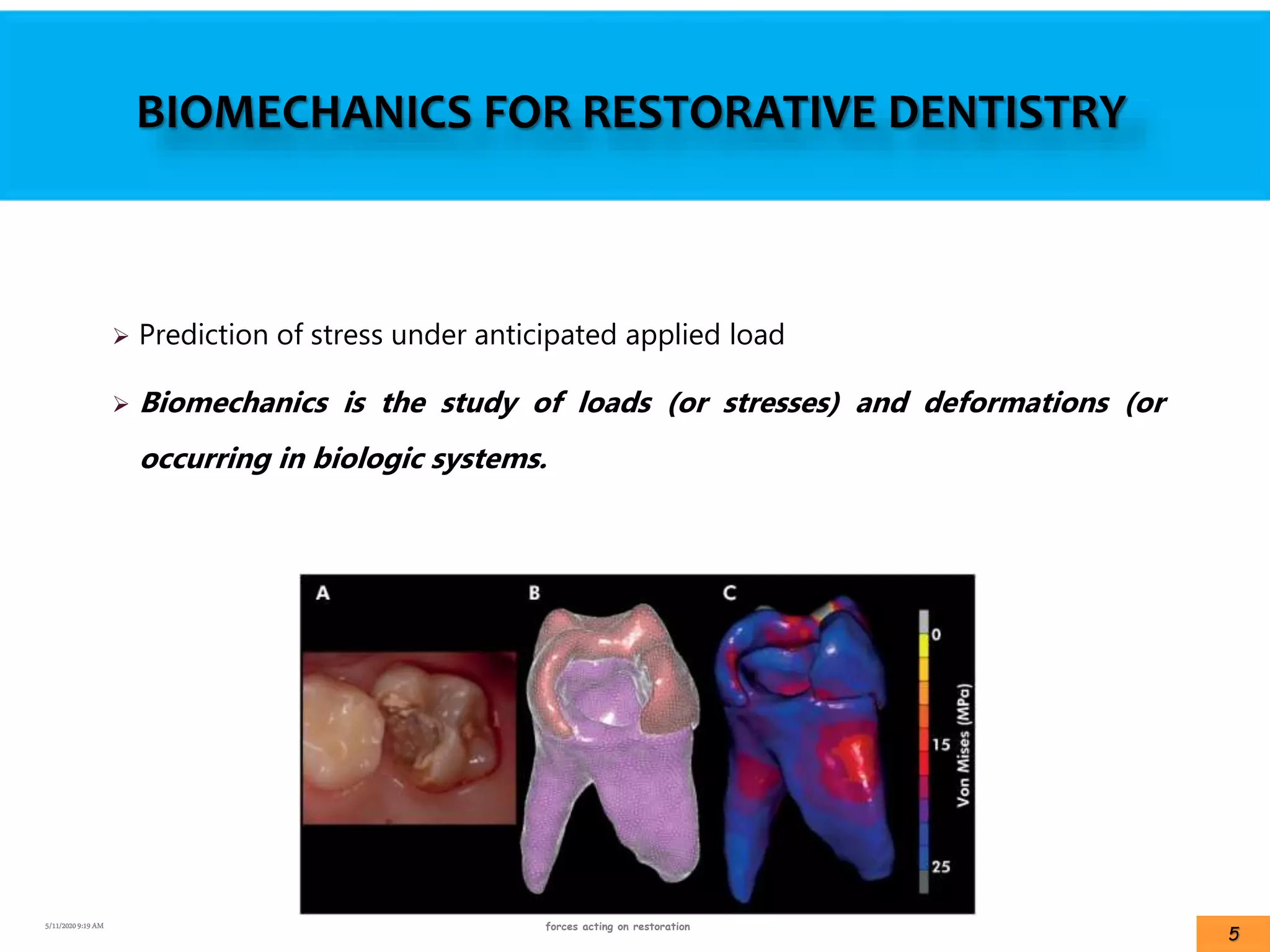The document discusses the biomechanics of forces acting on dental restorations, detailing the properties of enamel and dentin, areas of stress concentration, and mechanical challenges associated with various types of restorations. It emphasizes the importance of understanding stress distribution, mechanical properties of restorative materials, and factors influencing tooth response to forces. Additionally, the document covers the clinical implications of restoring teeth concerning stress transfer and the durability of the materials used.













































































































































